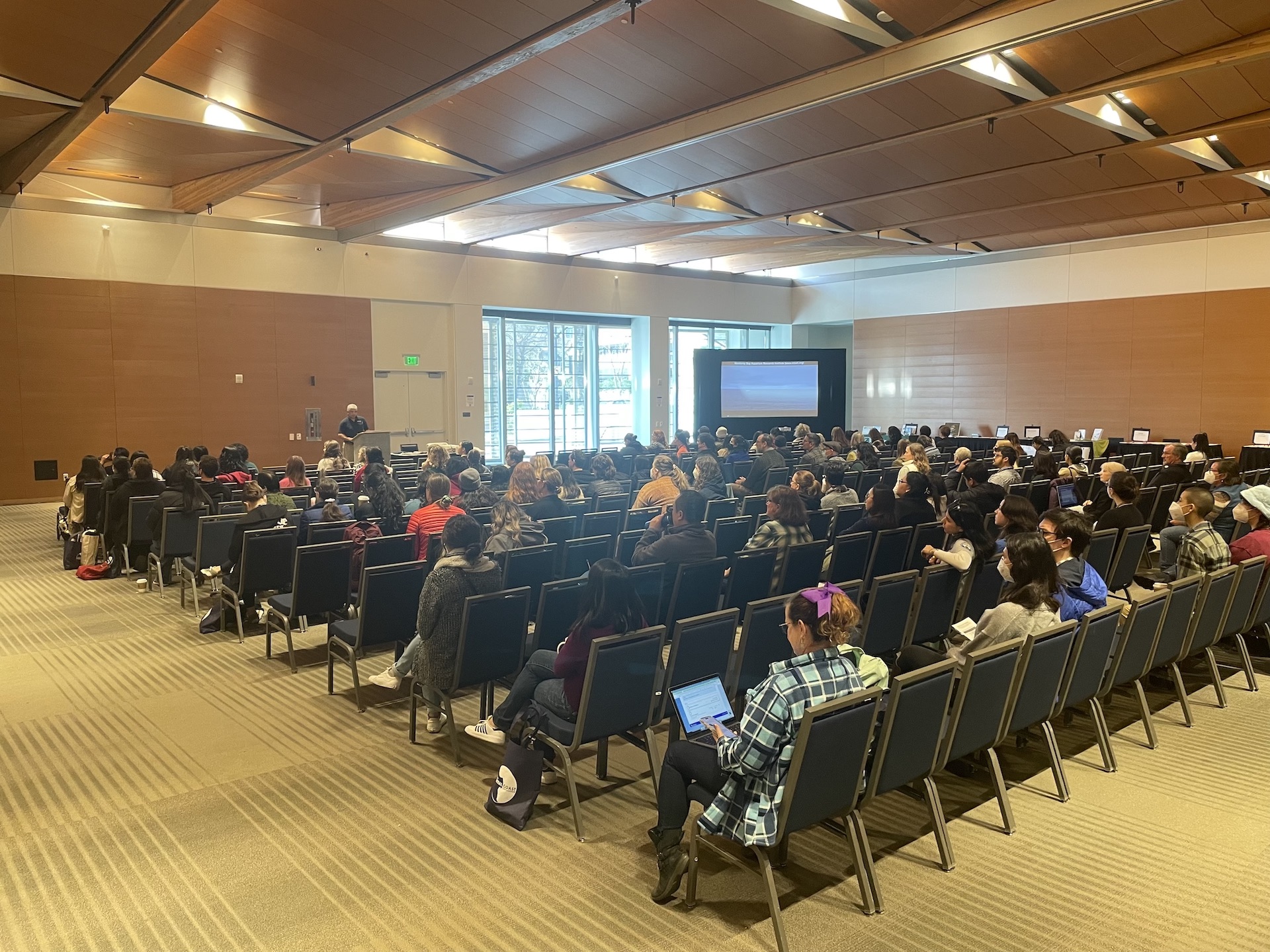CSUMB collaborative STEM Educators Conference sets sail in smooth waters
The conference brought together 183 in-service and aspiring teachers with undergraduates from local community colleges and universities.
/filters:quality(75)/41x0:1879x1080/prod01/channel_2/media/csumb/ucomm-news-library/STEM-Conference-in-Monterey.jpg)
By Adrienn Mendonça-Jones
It’s not everyday that a professional conference comes with robots and a curated playlist.
While Otis Redding is said to have penned the lyrics to “(Sittin’ On) the Dock of the Bay” gazing from a dock on the San Francisco Bay, it was the greater Monterey Bay area which featured heavily at the 2023 STEM Education Central Coast Conference on Saturday, Feb. 25.
The conference brought together 183 in-service and aspiring teachers with undergraduates from local community colleges and universities from Monterey, San Benito, and Santa Cruz counties at the Monterey Conference Center. They were all there to explore STEM teaching careers and practices, as well as new frontiers, including the way Artificial Intelligence (AI) is already improving multiple STEM fields.
“The education landscape is changing because of AI, and the more adaptive we can be, the better prepared students will be for the future workforce,” said Corin Slown, associate professor of science education and one of the conference’s executive leadership team planners.
Keynote speaker Dr. George I. Matsumoto, senior education and research specialist at the Monterey Bay Aquarium Research Institute (MBARI), introduced marine exploration and MBARI’s role in modern marine research.
Matusmoto also touched on the way machine learning is opening up and democratizing the research process to volunteers, who help train MBARI’s Artificial Intelligence systems that assist in identifying and annotating the ocean’s flora and fauna.
“There’s too much data to keep up with,” Matsumoto said. Since its inception in 1987, MBARI has identified approximately 260 new species, with more than 200 other species currently classified as undescribed—just waiting in the wings to be formally classified.
One attendee, Israel Fernandez, sought out Matsumoto after his keynote address to dig into data.

Participants listen to a presentation during the STEM Educators Conference
Fernandez has worked five years as a computer programmer developing embedded systems and is currently an undergraduate computer science student at Monterey Peninsula College. He understands how machines are trained to identify blocks of pixels, which then help create models that enable AI systems to comprehend the subtle differences between a dog or a cat.
In MBARI’s case, it might be the difference between Atolla reynoldsi, a deep-sea red medusa jellyfish named after the Monterey Bay Aquarium’s first volunteer (Jeff Reynolds), and Carybdea confusa, an often-misidentified box jellyfish found off the coast of Santa Barbara.
“Machine learning lowers the barrier of entry, and changes the job from having to be there and classify every piece of data, to focusing on unknown images,” Fernandez said. This enables human personnel to focus on identifying the unidentified species.
Fernandez hopes to eventually transfer into CSUMB’s computer science program, where he’ll focus on machine learning and AI development.
According to Slown, the conference emphasizes networking and helps encourage communities of practice that share and support innovative pedagogical practices, prepare the next generation of educators, and aid in teacher recruitment.
“If students knew that STEM teaching is an awesome and fun profession and that it provides great benefits, more people would go into teaching,” said Soleste Hilberg, the director of UCSC’s teacher preparation program and one of the conference’s executive planning team members.
Tiana Mohondro is also a member of the executive planning team, as well as an alumna of CSUMB, where she’s since served as a lecturer. Mohondro currently works as an eighth grade science teacher at El Sausal Middle School.
“I just fell in love with the school and the kids, they are so much fun,” said Mohondro. “They’re at the age where you can do silly elementary stuff with them. We built trebuchets last week, which is like a medieval catapult but cooler. They launch golf balls and help students explore principles of physics.”
If there’s one goal conference organizers hope to achieve, it’s the change from one person’s potential gravitational energy around the field of teaching into actual kinetic energy toward becoming a STEM teacher.
“It’s the primary reason we’re here,” said Hilberg. “There’s a huge need for more math and science teachers locally, and it’s our goal to help meet that need.”
Find more details about the conference or listen to the playlist here.
The conference was sponsored by the Robert Noyce Teacher Scholarship Program of the National Science Foundation, the Math and Science Initiative of the CSU Chancellor’s Office, and the teacher preparation programs at both University of California Santa Cruz and CSUMB.
Partial support for this work was provided by the National Science Foundation's Robert Noyce Teacher Scholarship Program under Award No. 2050336. Any opinions, findings, and conclusions or recommendations expressed in this material are those of the author(s) and do not necessarily reflect the views of the National Science Foundation.
News Information
- Published
- February 28, 2023
- Department/College
- University News
